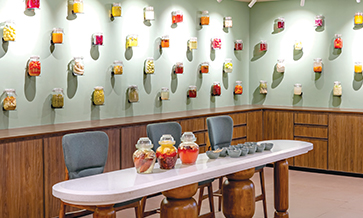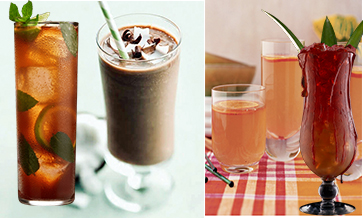Direct-to-consumer is not a new concept; older forms of it have existed via catalogue marketing, especially on board airlines, Keshav said; but added that in modern times D2C is digital to the consumer.
A recent business report, Keshav pointed out, mentioned that the D2C market size for lifestyle products in India, including alcohol, is in the region of US$ 60 billion, with direct online contributing to about US$ 20 billion.
“Where is the remaining going?” he asked. “For the alcobev industry, what is the opportunity via D2C? Even in the face of strict regulations and compliance, what are brands doing now?”
Aslam Gafoor recalled how, 10 years ago, DineOut was an online fine-dine discovery and table reservation platform. The company soon realised that their diners were not only looking at all the listed restaurants and their cuisines, but they were also looking for gourmet experiences.
DineOut soon launched Gourmet Passport. Its members are invited to partake of a new menu, perhaps paired with a new beer or something similar. Recently, DineOut conducted a seven-city, seven-premium-hotel dining experience with Pernod Ricard, termed ‘Malt and Jazz’. “We’ve come a long way in how the business started and where it is now,” he added.
Building communities
Keshav noted that nowadays companies are actually utilising communities to build their brands. “It’s a laser-targeted niche; they know exactly who they are getting to the room,” he remarked.
Hemanth Rao recalled how the Single Malt Amateur Club (SMAC) was established in 2011 as a platform to enjoy whiskies. “This forum was started because there were not many available at that point in time. Even social media was not prevalent as it is right now,” he said.
Today, SMAC is associated with multiple brands, both from India and abroad, presenting them a platform on which they interact with consumers directly. “Our members are acutely curious about whiskies. There are many brand followers too. They make for the right type of audience for these niche products,” Hemanth concluded.
When Anjali Batra’s Food Talk India started 8 years ago, “people thought the idea was stupid.” But she moved away from involving journalists and food critics, and offered space for people to be able to have authentic dialogues around food.
It gave the consumer a voice and a place to air his/her opinion. When people understood how online (Facebook) unity benefitted them, the idea of real-world curated experiences took shape for Anjali.
“The first one was a dinner with strangers – it was people unknown to each other coming together and having conversations over food!” Anjali recalled. That’s when alcobev brands realised the importance of such communities.
That is how Anjali’s Gin Explorers’ Club (GEC) helped introduce Hendrick’s gin to a larger audience. The rest, as they rarely say, is magic: the annual GEC events attract 50,000 people, with 45 gin brands in attendance!
There is a massive, growing demand for the experience vertical and that gives a beautiful canvas for brands to come in. “The consumer is already going every day: even on a Monday or a Tuesday night, if you walk into a restaurant, you will see they’re almost at capacity,” Anjali adds.
Pandemic boost
Is the market racing ahead so fast that we need multiple things to catch up? That was Keshav’s next question. Hemant noted how the Covid-19 pandemic had fuelled the growth of such communities at a frenetic pace. Even the Indian single malt whiskies have shown phenomenal growth.
“That goes to show that the brands themselves are more confident about what’s happening in the market. Platforms like SMAC have helped to a certain extent, because these platforms allows for the conversion from the curious to the consumer,” he said.
On DineOut’s B2C side, it has had collaborations with brands from Diageo and Bacardi, where its App helps create a user experience at the restaurants – say sampling a Paul John whiskey, or a brand from Bacardi, Aslam said.
The company is now doing a few hundred events around the country with several alcobev brands. “DineOut’s App actually is the gateway to reach out to millions of consumers; there is something for everyone!” he remarked.
But what about staying neutral and brand-agnostic, Keshav asked? Anjali was quick to respond: “We have built a community because we talk about a larger conglomeration of ideas. A consumer would want to hear someone who’s talking about everything that’s great, and then positions his/her brand within that space. So there’s a lot more trust built that way.”
Hemanth added that even in the case of a brand-specific, brand-focused event, influencing SMAC members comes with the quid pro quo that brands get honest and candid feedback at such events. “So, we are not really selling our members or playing advocate for the brand.”
Keshav also started The Vault as a conversation piece around rare whiskies, gins, Armagnac, Calvados and Mezcals. The Vault Festival is an annual event that focuses on storytelling. It will be held in Mumbai in February 2023. Watch this space for more!
For the full panel discussion, visit Brews&Spirits Expo on YouTube.
https://www.youtube.com/watch?v=t9BpNHTVFk8













